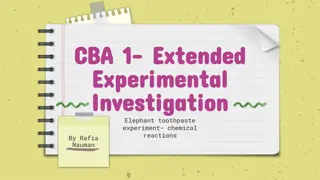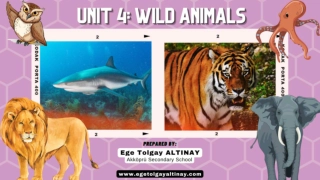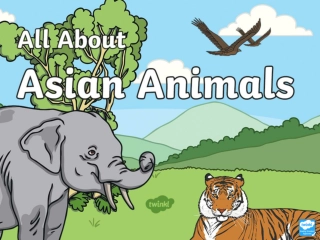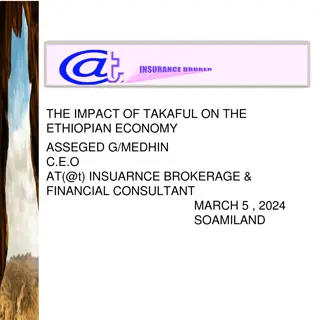The Impact of Elephant Ivory and Endangered Elephants
Elephants have tusks made of ivory, which has been historically used for various objects like games and luxury items. However, the demand for ivory has led to elephants being endangered due to illegal poaching. The material's popularity, durability, and smooth texture contributed to its widespread use, but awareness about protecting these majestic animals is crucial to prevent further harm.
Download Presentation
Please find below an Image/Link to download the presentation.
The content on the website is provided AS IS for your information and personal use only. It may not be sold, licensed, or shared on other websites without obtaining consent from the author. Download presentation by click this link. If you encounter any issues during the download, it is possible that the publisher has removed the file from their server.
Presentation Transcript
Did you know there are 3 species of elephants? Tusks are special teeth that grow throughout an elephant s life. Tusks are made from ivory which is formed from dentine, like human teeth. Tusks
What are tusks for? Elephants use their tusks for fighting, stripping bark off trees, knocking down trees and digging for roots or fruit to eat. Did you know? Elephants use either their left or right tusk to do most things in the same way that people tend to use either their left or right hand to write. This means the tusk they use most gets worn down from regular use. Only male Asian elephants have tusks which you can see and they are smaller than the tusks of African elephants.
Endangered!! Elephants are endangered as they have been killed for their ivory tusks over many years. In the past, elephant ivory was used as a raw material to make everyday objects like games and cutlery handles. In the 19th century elephants were hunted with guns which led to a steep drop in elephant numbers. Now ivory has been replaced by materials like plastic but elephants are still killed illegally for their tusks.
Games In the 19th century it was common to make games from ivory such as dice, dominoes and snooker balls. Here is a dice from England made from elephant ivory which is in the Pitt Rivers Museum. Although elephants do not typically live in England, objects made from ivory have been traded all round the world. This diagram shows how billiard balls were carved from elephant tusks. In the past what other games or toys do you think might have been made from ivory? What materials are used now to make toys and games? Do they harm the environment?
Everyday and Luxury Objects Before plastic was invented ivory was used to make everyday objects like combs and luxury items like fans. Here is a comb from Sri Lanka which is in the Pitt Rivers Museum. It shows elephants sprinkling the Buddha with water. Elephant ivory was often used to make handles for objects, like this sunshade handle from India which is in the Pitt Rivers Museum. Piano keys used to be made from elephant ivory! What other objects might have been made from ivory in the past?
Why was elephant ivory such a popular material? Ivory is a very hard material which last for a long time. What materials might breakdown more quickly? Ivory is a very smooth material which feels nice to touch. Elephant ivory could be easily sourced from natural habitats .. Until the invention and use of firearms led to a steep drop in elephant numbers, particularly with Europeans bringing firearms to East Africa.
Natural relationship between humans and elephants For thousands of years people living in elephant habitats have made use of the raw materials provided by this animal. They may have found elephants which had died naturally and then made use of the skin, hair and ivory. What objects do you think could be made from these materials? People living in Botswana used elephant tail hair to make brushes. People living in Myanmar used elephant toenails as lucky charms. People living in Uganda used elephant skin to make baskets. Sometimes elephants might have been hunted but people would only take what they needed. In many West and Central African communities, elephant hunters were highly respected and skilled. It took many years to learn the skills needed for hunting elephants, including understanding natural poisons and elephant behaviour.
High Status In West and Central African communities elephant tusks were highly prized. In Nigeria armlets made from elephant ivory were worn to show someone was important. Here is an armlet from Nigeria made from African elephant ivory with silver pins embedded which is in the Pitt Rivers Museum. What might a leader wear now to show they are important? In West and Central African communities, trumpets made from elephant tusks were skilfully carved and played at special occasions. Here is a Negbanzi (trumpet) from the Democratic Republic of Congo which is in the Pitt Rivers Museum. What objects have you seen as part of important ceremonies? What materials have they been made from?
Situation Today The exploitation of elephants for their ivory in the 19th century led to steep declines in their numbers. African savannah elephants and Asian elephants are Endangered and African forest elephants are Critically Endangered. To protect elephants there has been a ban on the international trade of elephant ivory since 1990. But elephant ivory is a valuable material and elephants are killed illegally. Around 20,000 African elephants are killed illegally every year for their ivory that s around 55 everyday or one every 25 minutes. Elephants are dying faster than they are reproducing, and their habitats have been reduced by the increase in human populations.
Developments Conservation projects have been set up to help protect elephants, and to teach people how to live alongside them. African elephants are now being born tuskless due to the many years of humans hunting them for their tusks! In order to survive, their genes adapted ways of staying alive by getting rid of the one thing that was causing them to be killed by humans their tusks. African savannah elephants What could you do to help elephants?
















































